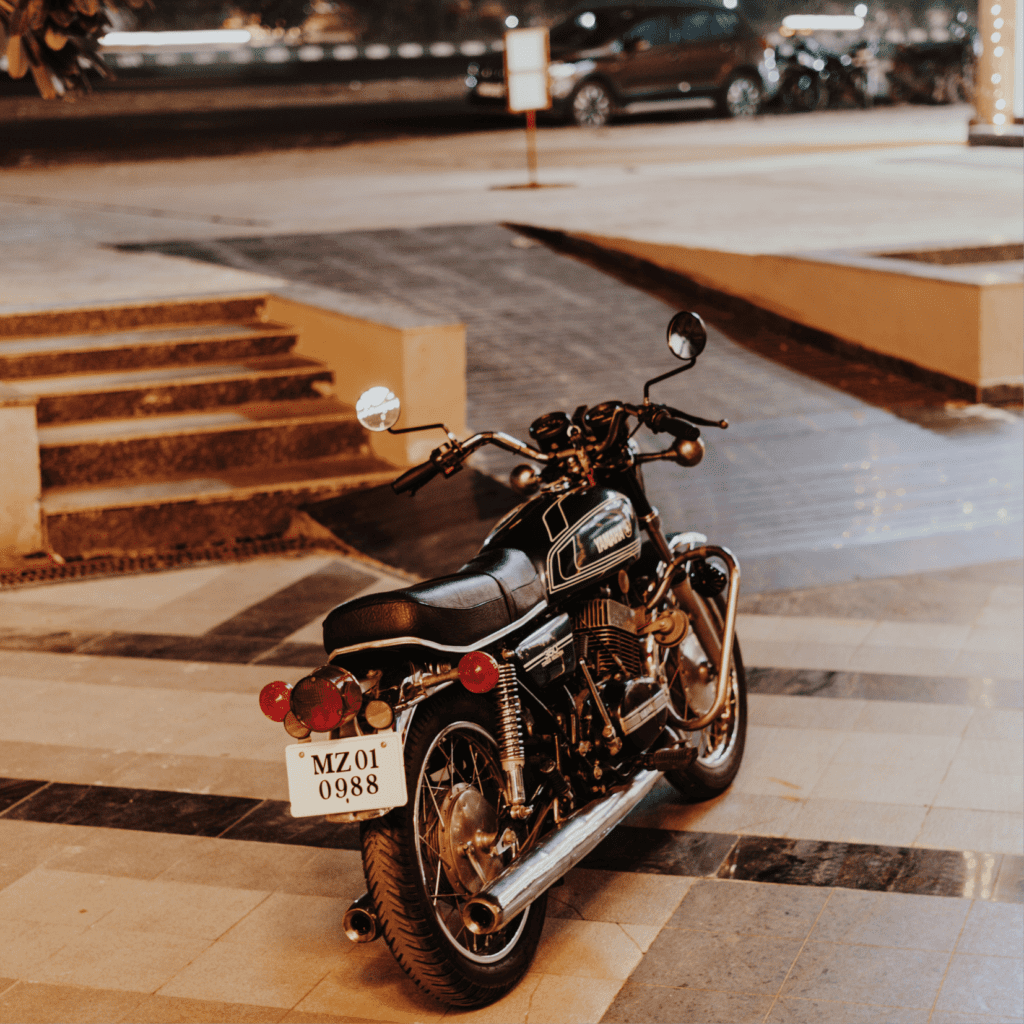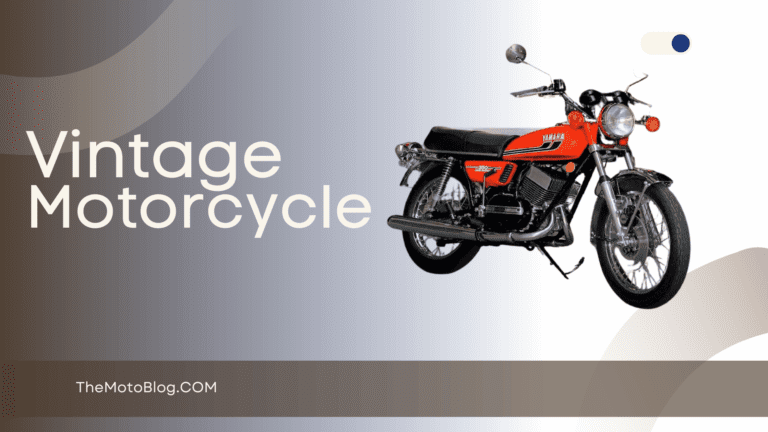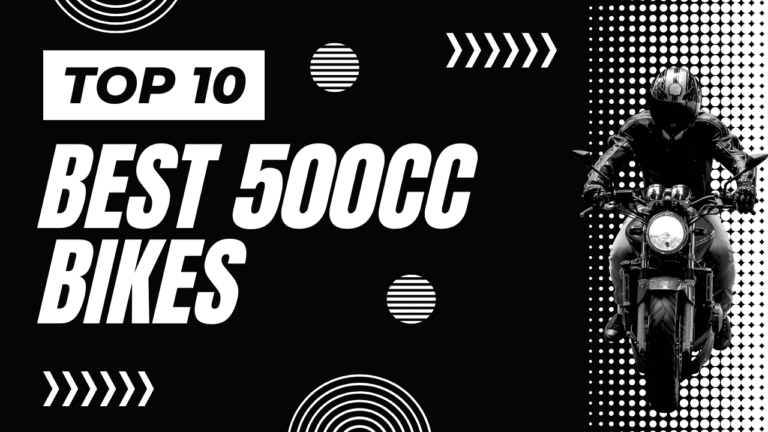Yamaha RD350: A Comprehensive Overview of This Classic Bike
When you think of classic motorcycles that have left an indelible mark, your mind might drift to the Yamaha RD350. This beast, known for its raw power and nimbleness, is a testament to Yamaha’s engineering prowess. It’s more than just a motorcycle; it’s a symbol of speed and agility that has thrilled riders worldwide since the 1970s.

Popularly dubbed as the “Racing Death”, the RD350 was nothing short of a revolutionary product from Yamaha. Its two-stroke engine and six-speed gearbox offered unmatched performance in its time, making it an instant hit among bike enthusiasts. Sure, there might be faster bikes on today’s roads – but few can match the RD350 when it comes to sheer riding pleasure.
But what sets this machine apart? What makes it so special? For one thing, its simplicity mixed with high performance is something many modern machines fail to replicate. The Yamaha RD350 remains your go-to if you’re seeking raw power coupled with authentic motorcycling experience. There’s no denying that this classic machine commands respect like none other in the realm of two-wheelers.
The Legacy of Yamaha RD350
There’s something about the Yamaha RD350 that makes it a timeless classic. Right from its debut in 1973, this motorcycle has been stealing hearts and turning heads with its raw power and sleek design. It wasn’t just another bike on the roads; it was, and still is, a symbol of freedom, thrill, and unparalleled performance.

When you think about iconic motorcycles, you’re likely to imagine roaring engines, high-speed chases, and the thrill of the open road. In many ways, these images perfectly encapsulate what the Yamaha RD350 is all about. With its twin-cylinder engine producing an impressive 39 horsepower at 7500 rpm back in its heyday—it was a powerhouse that outperformed most other bikes in its category.
Let’s delve into some notable numbers:
| Year | Horsepower | RPM |
|---|---|---|
| 1973 | 39 | 7500 |
The Yamaha RD350 had more than just raw power going for it—its style made it equally appealing. Its streamlined bodywork gave it an aggressive look that matched its punchy performance. Plus, the dual exhaust pipes were not only aesthetically pleasing but also delivered a satisfying growl that let everyone know you were coming.
However, owning a Yamaha RD350 wasn’t merely about riding; it was akin to being part of an exclusive club. Even today:
- Owning this beauty is considered prestigious
- There are dedicated fan groups around the world
- Motorcycle enthusiasts seek them out for their collections
Indeed, this Japanese two-stroke motorcycle isn’t just remembered—it’s revered for giving riders an experience like no other.
To sum up: if there’s one motorcycle that has left an indelible mark on both history and hearts alike—it’s undoubtedly the Yamaha RD350. Whether you owned one or simply admired them from afar—you felt its impact. And while newer models may come along with advanced features—the legacy of Yamaha RD350 continues to ride strong.
Understanding the Yamaha RD350’s Engine Power
When you’re looking at the Yamaha RD350, it’s hard not to be impressed by its engine power. This iconic bike, first released in the 1970s, is known for its raw performance and agility that stems from a potent two-stroke engine.
This ’70s classic was equipped with an air-cooled, two-stroke, parallel twin engine. The 347cc powerhouse could deliver up to 39 horsepower at 7500 rpm. That kind of power output was groundbreaking during its time and even today remains impressive for such a small displacement motor.
| Displacement | Horsepower | RPM |
|---|---|---|
| 347cc | 39hp | 7500 |
What sets this machine apart is its ability to rev high while maintaining smooth operation. You’ll find that the Yamaha RD350’s torque curve peaks early which provides strong acceleration straight off the line.
- High RPM performance
- Smooth operation
- Impressive acceleration
The torque distribution on this motorcycle allows you to harness all of its available power across a wide range of speeds. It’s no wonder why many enthusiasts consider it a marvel in terms of performance and handling capabilities.
Additionally, Yamaha incorporated advanced features like reed valve induction into their design. This allowed for better fuel-air mixture control resulting in improved throttle response and overall efficiency – another testament to Yamaha’s commitment towards innovation and performance optimization.
Now bear in mind that despite these impressive numbers and features, maintenance plays a key role here. As powerful as it is, remember that it’s essential to keep your RD350 well-maintained so you can continue experiencing that thrilling ride without any hiccups along the way!
To sum up:
- The RD350 boasts a powerful two-stroke engine.
- Its peak torque delivery ensures quick accelerations.
- Reed valve induction enhances throttle response.
So there you have it! A closer look at what makes the Yamaha RD350 such an iconic powerhouse on two wheels. With knowledge like this under your belt, we are sure you’ll appreciate every bit of engineering genius behind this legendary ride!
Design and Comfort: How does Yamaha RD350 Stand Out?
When it comes to a blend of aesthetics and comfort, the Yamaha RD350 certainly stands out. Its design is a perfect fusion of classic and modern motorcycle elements. It’s the kind of bike that turns heads on the street, with its polished aluminum bodywork, chic round headlamp, and iconic Yamaha racing blue color scheme.
The first thing you’ll notice about the Yamaha RD350’s design is its sleek profile. The bike’s low-slung stance gives it an aggressive yet refined look. You won’t find any unnecessary frills or gaudy embellishments here – just clean lines that accentuate the machine’s raw power.
But beauty isn’t just skin deep for this beast. When you hop onto the saddle of an RD350, you’ll immediately appreciate how comfortable it feels. The plush seat cushioning provides ample support for long rides while the handlebars are set at just the right height for relaxed cruising or spirited riding.
Moreover, let’s talk about weight distribution and ergonomics, both crucial aspects contributing to rider comfort:
- Weight Distribution: With a kerb weight of 155 kg (341 lbs), the RD350 strikes an ideal balance between stability and maneuverability.
- Ergonomics: The foot pegs are positioned such that they offer a natural seating posture without causing undue strain on your knees or back.
Here’s a quick recap in table format:
| Feature | Description |
|---|---|
| Design | Sleek profile with clean lines |
| Color Scheme | Iconic Yamaha racing blue |
| Seat Cushioning | Plush; excellent for long rides |
| Handlebar Height | Ideal for relaxed cruising and spirited riding |
| Weight Distribution | Kerb weight of 155 kg (341 lbs) offering stable yet maneuverable ride |
| Ergonomics | Foot pegs positioned to provide natural seating posture |
In essence, what sets Yamaha RD350 apart is its unique combination of striking design elements with superior rider comfort. This bike doesn’t just promise style; it delivers on every front – making every ride not only enjoyable but also truly unforgettable.
Performance Analysis of the Yamaha RD350
When you’re talking about classic motorcycles, the Yamaha RD350 often comes to mind. This bike is renowned for its performance and speed, carving out a niche for itself in the history of two-wheelers.
First off, let’s talk power. The RD350’s engine boasts an impressive 39 horsepower (hp) at 7500 rpm. While it may not sound like much by today’s standards, back in the mid-1970s this was quite significant. It allowed riders to hit speeds upward of 95 miles per hour (mph).
| Parameter | Value |
|---|---|
| Horsepower | 39 hp @ 7500 rpm |
| Top Speed | ~95 mph |
Next up: handling. You’ll find that despite its age, the RD350 holds up well on modern roads. Thanks to its low weight of just around 155 kg (~342 pounds), maneuvering this bike through traffic or winding roads is a breeze.
The braking system deserves mention too – featuring dual disc brakes upfront and a single disc at the rear – providing more than sufficient stopping power for the lightweight machine.
- Power: 39 hp
- Handling: Lightweight (~342 pounds)
- Braking System: Dual Disc Front / Single Disc Rear
Fuel consumption is another area where Yamaha did well with this model. With an average fuel economy hovering around 40 miles per gallon, it’s pretty economical for such a spirited ride.
However, be aware that maintenance can be high due to scarcity of parts and because it’s a two-stroke engine which requires regular upkeep to keep running smoothly.
In terms of acceleration, expect nothing less than exhilarating from this beast. It takes merely six seconds to reach from zero to sixty mph – quite commendable considering it’s over four decades old!
All in all, whether you’re seeking thrill on open roads or just want something retro-cool parked in your garage – there isn’t much that beats the classic charm coupled with exceptional performance offered by Yamaha RD350.
Comparing the Yamaha RD350 with its Competitors
When it comes to vintage motorcycles, few can hold a candle to the Yamaha RD350. That’s not to say it doesn’t have competitors though. Let’s take a peek at how this classic stacks up against some of its rivals.
The first contender in our comparison is Honda CB360. While both models hail from the 1970s, they offer distinctly different experiences. The CB360 has a reputation for being comfortable and reliable, but it lacks the raw power and speed of the RD350. Here’s a quick side-by-side:
| Yamaha RD350 | Honda CB360 | |
|---|---|---|
| Top Speed | 105 mph | 100 mph |
| Horsepower | 39 hp at 7500 rpm | 34 hp at 9000 rpm |
Next up, we have Suzuki GT380. This model matches closely with the RD350 in terms of top speed but falls short when measuring horsepower output:
| Yamaha RD350 | Suzuki GT380 | |
|---|---|---|
| Top Speed | 105 mph | 106 mph |
| Horsepower | 39 hp at 7500 rpm | 38 hp at 8000 rpm |
Lastly, let’s look at Kawasaki KH400. This bike beats out the RD350 in terms of horsepower but can’t quite keep up when it comes to top speed:
| Yamaha RD350 | Kawasaki KH400 | |
|---|---|---|
| Top Speed | 105 mph | 101 mph |
| Horsepower | 39 hp at7500rpm | 41hpat7000rpm |
While these comparisons are helpful, remember that there’s more to choosing a motorcycle than just numbers and stats. It’s about finding what fits your personal style and riding needs best! You might value comfort over power or prefer an understated design over something flashy.
Regardless of your preferences, you’ll find that each bike offers unique strengths and appeals – just like our beloved Yamaha RD350! So don’t be shy about taking them all for a spin as you hunt for your perfect ride!
The Evolution of Yamaha RD350 Over Time
If you’re a lover of motorbikes, the name Yamaha RD350 probably sparks some excitement. Let’s take you on a journey through time, diving into the evolution of this iconic machine.
Yamaha RD350, introduced in 1973, quickly captured hearts with its high performance and affordability. Its 347cc two-stroke twin engine was revolutionary for that era. This bike wasn’t just about power; it boasted features like an auto lube system and twin disc brakes up front.
Fast forward to 1976, Yamaha launched the RD350B model. What set it apart? It incorporated modifications such as repositioned footpegs for improved riding comfort and new colors to choose from.
The next big leap came in 1980 when the RD350LC hit the market. Liquid cooling became standard in this version, marking a significant advancement in technology. Further enhancements were seen in suspension improvements and better aerodynamics due to changes in body design.
By mid-1980s, Yamaha RD350F/F2 (YPVS) joined the lineup. Here’s where things got really interesting! This model introduced power valve systems or YPVS (Yamaha Power Valve System) that dynamically adjusted exhaust port timing according to engine revs for better power delivery across all speeds.
Here is a short summary:
| Year | Model | Notable Feature |
|---|---|---|
| 1973 | Yamaha RD350 | Two-stroke twin engine |
| 1976 | Yamaha RD350B | Repositioned footpegs |
| 1980 | Yamaha RD350LC | Liquid cooling system |
| Mid-1980s | Yamaha RD350F/F2 (YPVS) | Power valve systems |
To sum up, your beloved Yamaha RD350 underwent numerous transformations over time – each one enhancing its capabilities further while retaining its original charm.
Remember though: while it’s fascinating to chart these developments over time, what truly matters is your own experience on these machines. After all, nothing beats feeling that adrenaline rush as you throttle down an open road on your very own piece of history!
Maintenance Tips for Your Yamaha RD350
Owning a classic motorcycle like the Yamaha RD350 is a great joy, but it’s also a responsibility. To keep your bike in top shape and ensure its longevity, it’s crucial to pay attention to regular maintenance.
First off, let’s talk about oil changes. Changing the oil frequently is key for any vehicle, but even more so for older models like the RD350. As a general rule of thumb, aim to change your bike’s engine oil every 1,000 miles or at least twice per year – whichever occurs first.
Another important aspect of maintenance lies in taking care of the tires. Keep an eye on tire pressure regularly – ideally once every two weeks. Maintaining correct tire pressure not only ensures smooth rides but also extends the life of your tires.
Here are some numbers for quick reference:
| Maintenance Task | Frequency |
|---|---|
| Engine Oil Change | Every 1,000 miles/twice per year |
| Tire Pressure Check | Every two weeks |
Moving on to air filters – these need to be cleaned and replaced promptly whenever they become too dirty or worn out. A clean air filter will boost engine performance and fuel efficiency.
Next up: brakes. Regularly check brake fluid levels and replace as needed; remember that brake pads should be replaced when they wear down to about 1/8 inch thick.
Lastly, don’t forget about chain lubrication and tension adjustment – both crucial tasks that’ll help prolong the lifespan of your drive chain.
Remember:
- Change engine oil every 1,000 miles or twice yearly
- Check tire pressure bi-weekly
- Replace air filters when dirty
- Maintain proper brake fluid levels
- Ensure proper chain lubrication and tension
With these tips in hand, you’re well-equipped to maintain your Yamaha RD350 properly!
Buying Guide: New vs. Used Yamaha RD350
When you’re on the hunt for a Yamaha RD350, one of the first decisions you’ll need to make is whether to go new or used. Let’s break down some factors that might sway your decision.
New Yamaha RD350s offer that fresh-from-the-factory feel and peace of mind knowing your ride hasn’t been subjected to wear and tear. You can enjoy advanced features, a full warranty, and no history of damage or neglect. It’s also worth noting that with a new bike, you’ll have access to dealer financing options. But remember, all these perks come at a premium price tag.
On the other hand, used Yamaha RD350s present an opportunity for savings if you’re willing to accept potential risks associated with pre-owned vehicles. With a used model, there may be uncertainty about how well it was maintained by its previous owners.
To help balance out this choice between new and used models, let’s look at some data:
| New Yamaha RD350 | Used Yamaha RD350 | |
|---|---|---|
| Price | High | Low |
| Condition | Excellent – No prior use | Varies – Depending on past usage |
| Warranty | Yes – Full coverage from manufacturer/dealer | Possibly – Likely limited if any |
| Financing Options | Yes – Through dealer/manufacturer promotions | Limited |
While considering these details, don’t forget about additional costs like insurance rates and registration fees which tend to be higher for newer bikes.
Finally, consider this advice when making your choice:
- Do thorough research on market prices
- Inspect the bike thoroughly (if buying used)
- Consider taking along an experienced friend or mechanic
- Test drive before purchase
Remember that whether new or used, each Yamaha RD350 has its own charm – it’s up to you which fits better with your budget and riding preferences!
Common Issues and Solutions for the Yamaha RD350
If you’re a proud owner of a Yamaha RD350, you’ll know it’s an iconic motorcycle with its own set of quirks. Let’s delve into some common issues faced by RD350 enthusiasts and discuss possible solutions.
Engine Overheating: This can be due to a variety of reasons, from insufficient oil to poor quality fuel. Regularly check your oil levels and make sure you’re using high quality fuel to keep your engine running smoothly.
Vibration Issues: Excessive vibrations can lead to discomfort while riding or even damage parts over time. If you’re experiencing this problem, it might be because the engine mounts are loose or worn out. Try replacing them with new ones.
Starting Problems: Many owners have reported difficulties in starting their RD350s, especially during colder months. It could signal an issue with the ignition system or carburetor settings. You might need to get these checked and adjusted by a qualified mechanic.
- Engine overheating
- Check oil levels regularly
- Use high-quality fuel
- Vibration issues
- Replace worn-out engine mounts
- Starting problems
- Have ignition system or carburetor checked
Remember, regular maintenance is key when it comes to preventing most common issues on your Yamaha RD350. If problems persist despite your best efforts, don’t hesitate to consult a professional mechanic.
Wrapping Up: Is the Yamaha RD350 Right for You?
So, you’ve gotten to know the Yamaha RD350 inside and out. But is this iconic bike the right one for your needs? Let’s delve into a few final points that might help you decide.
First off, consider what kind of rider you are. If you’re passionate about classic two-stroke motorcycles with impressive agility and acceleration, then it’s likely the RD350 could be a great fit. It boasts an unrivaled blend of power and lightweight design that has stood the test of time.
Remember though, this isn’t just any motorcycle—it’s a piece of history. If you’re someone who loves preserving vintage machines or if you have a soft spot for retro style, there’s no denying that owning an RD350 can bring immense satisfaction.
However, keep in mind that with age comes certain challenges. Maintenance will certainly require more effort compared to modern bikes. Parts may not be as readily available and finding mechanics experienced with these older models might prove difficult.
Here are some pros and cons to ponder:
- Pros:
- Classic two-stroke power
- Lightweight design
- Iconic status
- Cons:
- Higher maintenance requirements
- Parts may be hard to find
Ultimately only you can decide whether the Yamaha RD350 aligns with your riding desires and lifestyle. Spend time weighing these factors carefully before making your decision—after all, choosing a motorcycle is not just about speed or looks; it’s about finding a ride that truly speaks to your soul.
If you liked this article, then please subscribe to our YouTube Channel for more Bike Videos. You can also find us on Instagram, Twitter and Facebook.
Disclosure: As an Amazon Associate, I earn from qualifying purchases. Read more about Amazon Affiliate Disclaimer.

Vishwanath Mathpati
I am Vishwanath Mathpati, a full-time Blogger and Motorcyclist from Bidar, Karnataka. I love writing about my Motorcycles Stories and Riding Gears on this blog.
Know More About Me.



